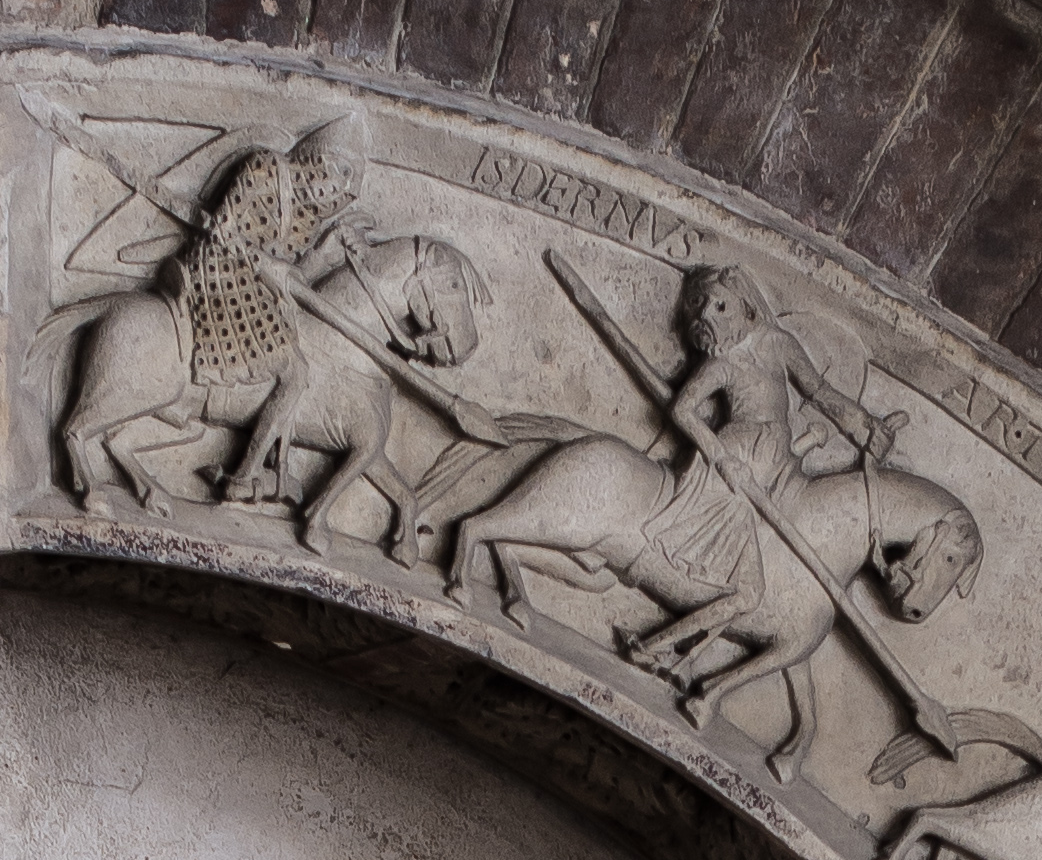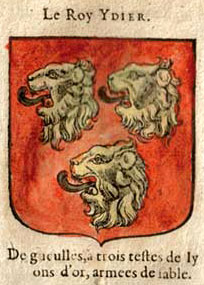St Edern on:
[Wikipedia]
[Google]
[Amazon]
 Edern ap Nudd ( la, Hiderus; Old french: Yder or ') was a knight of the Round Table in
Edern ap Nudd ( la, Hiderus; Old french: Yder or ') was a knight of the Round Table in
 Outside Welsh-language writing, Edern is first seen in Geoffrey of Monmouth's Historia Regum Britanniae as ''Hiderus filius Nu'', a knight of King Arthur's who fought in his Gallic campaign. The poet
Outside Welsh-language writing, Edern is first seen in Geoffrey of Monmouth's Historia Regum Britanniae as ''Hiderus filius Nu'', a knight of King Arthur's who fought in his Gallic campaign. The poet
 Edern ap Nudd ( la, Hiderus; Old french: Yder or ') was a knight of the Round Table in
Edern ap Nudd ( la, Hiderus; Old french: Yder or ') was a knight of the Round Table in Arthur's
Arthur's was a London gentlemen's club, now dissolved, which was established in 1811 and was disbanded in 1940. Between 1827 and 1940 it was based at 69 St James's Street. It is now best remembered for having built the London clubhouse currently ...
court in early Arthurian tradition. As the son of Nudd (the ''Nu'', ''Nut'' or ''Nuc'' of Old French, Arthurian romance
), he is the brother of Gwyn, Creiddylad, and Owain ap Nudd. In French romances, he is sometimes made the king of a separate realm. As St Edern, he has two churches dedicated to him in Wales.
Etymology
TheWelsh
Welsh may refer to:
Related to Wales
* Welsh, referring or related to Wales
* Welsh language, a Brittonic Celtic language spoken in Wales
* Welsh people
People
* Welsh (surname)
* Sometimes used as a synonym for the ancient Britons (Celtic peop ...
name Edern comes from a Brittonic borrowing of Latin ''Aeternus'', meaning "eternal, everlasting, immortal".
Appearances
In '' Culhwch ac Olwen'', Edern is named as one of Arthur's knights in a list of his retinue, but plays no part in the narrative. Edern also appears in ''The Dream of Rhonabwy
''The Dream of Rhonabwy'' ( cy, Breuddwyd Rhonabwy) is a Middle Welsh prose tale. Set during the reign of Madog ap Maredudd, prince of Powys (died 1160), its composition is typically dated to somewhere between the late 12th through the late 14th c ...
'' (a late medieval Welsh Arthurian romance) in which he commands a "pure black troop" of Danish soldiers allied to Arthur against the Saxons. He is named one of Arthur's foremost counsellors during the battle.
''Geraint son of Erbin''
Edern plays a more important role in ''Geraint son of Erbin'' (a Welsh adaptation ofChrétien de Troyes
Chrétien de Troyes (Modern ; fro, Crestien de Troies ; 1160–1191) was a French poet and trouvère known for his writing on Arthurian subjects, and for first writing of Lancelot, Percival and the Holy Grail. Chrétien's works, including ''E ...
' romance '' Erec et Enide''), in which he and two companions, a beautiful lady and a whip-brandishing dwarf, come across Gwenhwyfar, one of her handmaidens and the knight Geraint ab Erbin
Geraint () is a character from Welsh folklore and Arthurian legend, a valiant warrior possibly related to the historical Geraint, an early 8th-century king of Dumnonia. It is also the name of a 6th-century Dumnonian saint king from Briton hagi ...
in a forest. The handmaiden is sent to discover Edern's identity, but is rebuked and struck by the dwarf. Geraint also goes and suffers the same fate, but chooses to spare the dwarf's life and retreats.
Seeking his adversary, Geraint heads to a "walled town", where a great tournament is annually held. Edern, champion of the tournament for two years running, challenges Geraint to joust. Initially, Edern has the upper hand but by the end of the duel, he suffers vicious wounds at Geraint's hand and begs for mercy. Geraint allows Edern to keep his life on the condition that he rides to Arthur's court to make amends for his insult. Edern accepts the condition, and reveals his name to his rival. Edern later rides to Arthur's court where his apology is accepted by Gwenhwyfar. Heavily injured, he is treated by Morgan Tud
Morgan le Fay (, meaning 'Morgan the Fairy'), alternatively known as Morgan ''n''a, Morgain ''a/e Morg ''a''ne, Morgant ''e Morge ''i''n, and Morgue ''inamong other names and spellings ( cy, Morgên y Dylwythen Deg, kw, Morgen an Spyrys), is a ...
, the chief physician of the court. Upon his recovery, he is chosen to accompany Geraint to the kingdom of Geraint's father, Erbin.
Appearances as Yder
 Outside Welsh-language writing, Edern is first seen in Geoffrey of Monmouth's Historia Regum Britanniae as ''Hiderus filius Nu'', a knight of King Arthur's who fought in his Gallic campaign. The poet
Outside Welsh-language writing, Edern is first seen in Geoffrey of Monmouth's Historia Regum Britanniae as ''Hiderus filius Nu'', a knight of King Arthur's who fought in his Gallic campaign. The poet Wace
Wace ( 1110 – after 1174), sometimes referred to as Robert Wace, was a Medieval Norman poet, who was born in Jersey and brought up in mainland Normandy (he tells us in the ''Roman de Rou'' that he was taken as a child to Caen), ending his care ...
, in his adaptation of the ''Historia Regum Britanniae'' called the '' Roman de Brut'', renders the name as ''Yder fils Nu(t)''. There is also an Anglo-Norman '' Romanz du reis Yder''. However, Yder's "fame was too small to inspire later writers or visual artists. The only time he may have been immortalised is on the famous archivolt (1120-40) at Modena
Modena (, , ; egl, label=Emilian language#Dialects, Modenese, Mòdna ; ett, Mutna; la, Mutina) is a city and ''comune'' (municipality) on the south side of the Po Valley, in the Province of Modena in the Emilia-Romagna region of northern I ...
, which shows a knight called Idernus in a scene with King Arthur (Artus de Bretania), the captive queen Guinloie or Guenevere (Winlogee) and possibly Durmart (Burmaltus)."
Saint
Edern is the patron saint of two churches in Wales:St Edern's Church, Bodedern
St Edern's Church, Bodedern (sometimes referred to as St Edeyrn's Church) is a medieval parish church in the village of Bodedern, in Anglesey, north Wales. Although St Edern established a church in the area in the 6th century, the oldest parts of ...
, in Anglesey, and the church in the village of Edern, Gwynedd
Edern, formerly known as ''Edeyrn'', is a village and until 1939 a civil parish, in the Welsh county of Gwynedd. It is about 1 km southwest of the larger village of Morfa Nefyn, near Caernarfon Bay on the north coast of the Llŷn Peninsu ...
.
References
{{DEFAULTSORT:EDERN, AP NUDD Arthurian characters Welsh mythology